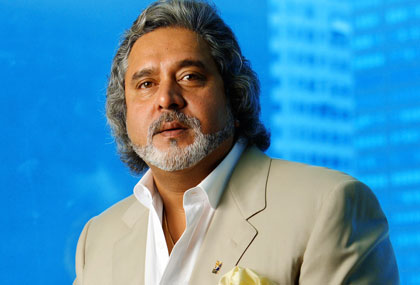If media coverage were to be a reflection of the scale of any problem, then it can safely be said that Vijay Mallya has all alone been responsible for the crisis in the Indian banking sector.
But that is clearly not the case.
Mallya owes Indian banks around Rs 9,000 crore. This is a very small amount when we look at the total amount of money owed by various corporates to Indian banks. The minister of state for finance Jayant Sinha shared some interesting data in a written reply to a question in the Lok Sabha, on March 11, 2016.
The accompanying table shows us how big the problem of banks’ lending to corporates actually is.
| Rs. in Crore | |||
| Corporate Lending | |||
| Year | Gross Advances | Gross NPAs | GNPA Ratio |
| 2012-13 | 31,11,761 | 1,00,118 | 3.22 |
| 2013-14 | 34,06,025 | 1,54,955 | 4.55 |
| 2014-15 | 36,15,133 | 1,93,123 | 5.34 |
| 2015-16 (till Dec. 15) | 38,41,836 | 2,60,653 | 6.78 |
The gross non-performing ratio has more than doubled between 2012-2013 and December 15, 2015. It has jumped from 3.22% to 6.78%. The gross non-performing ratio is essentially obtained by dividing gross non-performing assets by gross advances or total loans given by the banks, in this case to corporates.
And how do we define gross non-performing assets? As the per the Reserve Bank of India: “An asset…becomes non performing when it ceases to generate income for the bank.” When the corporate borrower stops paying interest and repaying the principal on a loan(a loan is an asset for a bank), the bank typically allows for a grace period of 90 days. After this grace period is over, the bank categorises the loans as a non-performing asset and starts setting aside money (or making provisions) for it. The total sum of such loans forms the gross-non-performing assets.
It is worth remembering here that a loan being categorised as a gross non-performing asset does not mean that all is lost for the bank when it comes to that particular loan. The bank can recover money from the asset that has been offered as a collateral against the loan. Of course this is not as straightforward as it sounds.
In Mallya’s case, he has also given personal guarantees to banks while taking loans for Kingfisher Airlines. Mallya owes around Rs 9000 crore to banks. This is a very small amount if one compares it to the gross-non-performing assets of corporate lending carried out by banks.
As on December 15, 2015, it was at Rs 2,60,653 crore. Mallya’s Rs 9,000 crore works out to around 3.5% of the total corporate gross non-performing assets. The percentage would be even more lower if we compare it to the total gross non-performing assets.
Also, Credit Suisse in a report released in October 2015 identifies some of the biggest corporates who are having a tough time repaying the money they have borrowed from banks. The Credit Suisse analysts (Ashish Gupta, Kush Shah and Prashant Kumar): “Going through the annual reports available for ‘House of Debt’ companies, we find instances where auditors have highlighted that the company has been in default for a period of up to 360 days. According to their auditors report, eight of the ten ‘House of Debt’ groups were in default last year. Total debt with these companies in default was at US$53 billion (~48% of total debt with the groups) of which US$37 billion were reported to be in default for 0-90 days by the auditors.”
The corporates which form the House of Debt group are as follows—Adani Group, Essar Group, GVK group, GMR group, Jaypee Group, JSW Group, Lanco Group, Reliance ADAG, Vedanta Group and Videocon Group.
Hence, the point is that the mess in the Indian banking sector is substantially bigger than just Vijay Mallya. It’s just that Mallya with his flashy lifestyle has become the poster boy for these corporates who have borrowed from banks and are now not in a position to repay.
The finance minister Arun Jaitley has been very vociferous about Mallya and has said: “The facts are very clear: Every government agency will take strong action against him. Banks will go all out to recover every single penny.”
Indeed, that is great. Nevertheless, the question is why just Mallya? What about the other corporates who have borrowed from banks and are now not repaying their loans? They owe the banks close to Rs 2,51,000 crore. Mallya owes just Rs 9,000 crore.
Why is the same aggression missing when it comes to the other borrowers?
The nation wants to know.
(Vivek Kaul is the author of the Easy Money trilogy. He tweets @kaul_vivek)
The column originally appeared on Swarajya Mag on March 22, 2016
